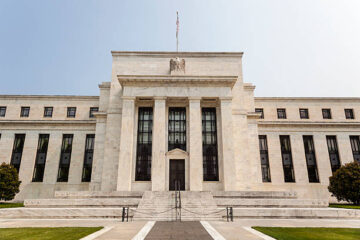Gasoline prices are seasonal. We all know that. They rise from mid-winter into the summer and fade in the fall when summer driving ends. Also, gas refiners typically use cheaper materials in making fuel during cooler months.
Prices are fading in a big way right now, and odds are that most American motorists will be paying less than $3 a gallon soon, maybe by the end of October.
And $2.50 isn’t out of the question — and maybe lower in some parts of the country.
Here’s why.
West Texas Intermediate, the benchmark U.S. crude, finished down 4.3% to $65.75 a barrel. That was the lowest close since August 2021. It’s down 19.4% in the third quarter and 8.2% this year. The rout was set off by a new, lower projection of oil demand from the Organization of Petroleum Exporting Countries.
Crude oil currently accounts for about half the price of a gallon of gasoline.
Related: Veteran investor sets his sights on Palantir, SoFi and Rocket Lab
GasBuddy.com puts the national average retail price of gasoline at $3.248 a gallon. The American Automobile Association’s daily Gas Prices report puts the average at $3.26.
AAA’s price is off 42 cents, or 11.4%, since it peaked at $3.679 on April 19. GasBuddy’s price peaked at $3.70 a day later. The peak came early and was a surprise: Early this year, industry observers had speculated that the average might hit $5 this summer.
Some states see sub-$3 gasoline prices
Both organizations agree that 11 states already are enjoying prices under $3 — Alabama, Arkansas, Kansas, Kentucky, Louisiana, Missouri, Mississippi, Oklahoma, South Carolina, Tennessee and Texas. North Carolina’s average price is right at $3.
Mississippi has the lowest statewide average now at about $2.75.
Sign up for TheStreet’s free daily newsletter.
It’s not a stretch to see the national averages under $3 a gallon in a month. Based on current trends, the date would be around Oct. 14.
The price has been above $3 for 1,217 straight days.
Tom Kloza, global head of energy analysis at Oil Price Information Service, sees prices falling “a penny a day over the next 30 days.” A national average under $3 may well hit by Oct. 3.
How about $2.50? That’s doable, too, based on price history in 2022 and 2023. Kloza agrees, seeing $2.50 by Election Day, Nov. 5.
Could some communities see $2 gas? Maybe — but only in states with the lowest gasolines prices now, such as Mississippi. Add Texas, Louisiana and Oklahoma as candidates.
The last time U.S. prices were under $2 was between March 31, 2020, and June 5, 2020.
What could derail the gasoline-price trend
Some things have to break right for the $2.50/gallon scenario to work.
WeatherGeopolitics (especially the Middle East) OPEC, the Organization of Petroleum Exporting Countries.
Storms can cause potentially the most problems and keep prices higher than many expect. Weather can cause the most problems.
Tropical Storm Francine has formed in the southern Gulf of Mexico. It’s expected to become Hurricane Francine on Tuesday.
Exxon Mobil offshore platform in the Gulf of Mexico near Dauphin Island, Ala.
It will hit primarily the central Louisiana coast, probably on Wednesday. Oil production in the vast network of offshore wells in the Gulf of Mexico is starting to be shut in.
The storm may cause outages in the refinery network along the coast. About 48% of total U.S. refinery capacity is located along the Gulf Coast.
Energy stocks slumped Tuesday as traders ignored the storm and crude oil lower.
The Energy Select Sector SPDR fund (XLE) fell 1.7% to $85.14. It’s down 14% from its 52-week high of $98.97.
Right now, the storm is expected to come ashore as a Category 2 hurricane, which means winds can top 100 mph (161 kmh). But that doesn’t appear to be catastrophic for oil traders, who have pushed crude oil prices below $70 a barrel as of early Tuesday. So gas prices may continue to fall despite the hurricane.
More Economic Analysis:
Jobs report surprise adds to case for bigger Fed interest rate cutsJobs report to signal timing and size of autumn Fed interest rate cutsFed rate cuts may not guarantee a September stock market rally
OPEC is a problem because its members want the highest oil prices possible to make the most money.
OPEC can sort of control prices; the problem is it has little power to punish those members who break the rules. Many OPEC members are willing to bend on prices to ensure their production is sold.
And OPEC has competition: The U.S. is currently the world’s No. 1 oil producer.
Weak economies are depressing price pressure
In addition, OPEC cannot control demand. The economies of some big consuming countries, such as China, are soft, and too much oil is available on global markets to keep prices up.
Lastly is the steadily rising availability of electric vehicles, which is cutting into gasoline demand.
Bottom line: The trend for gasoline is lower. Average prices nationally will probably fall under $3.
That does not mean all states will see prices drop below $3. Average prices in Oregon, Idaho, Nevada and Alaska prices are above $3.60. Prices in California (particularly due to taxes and special gas-formulation rules), Washington and Hawaii are still above $4. But residents there will see lower prices, too.
Related: Veteran fund manager sees world of pain coming for stocks


